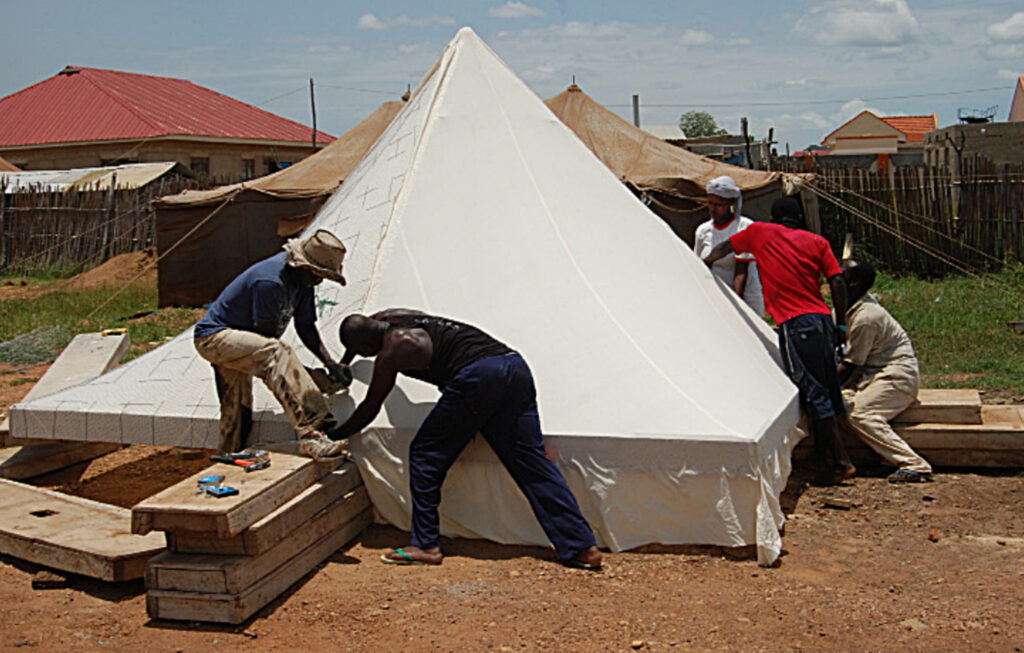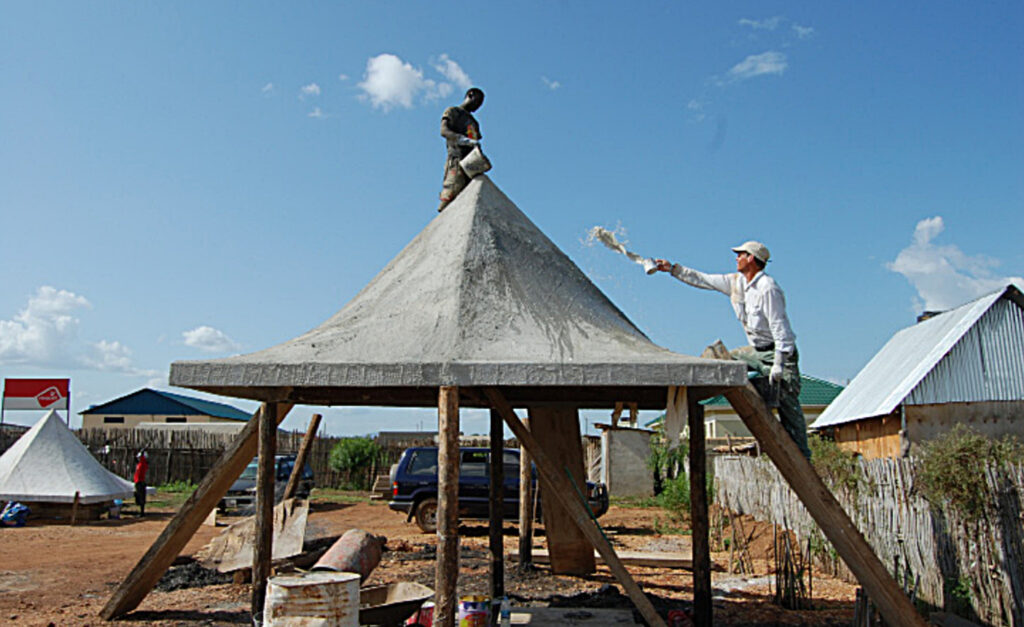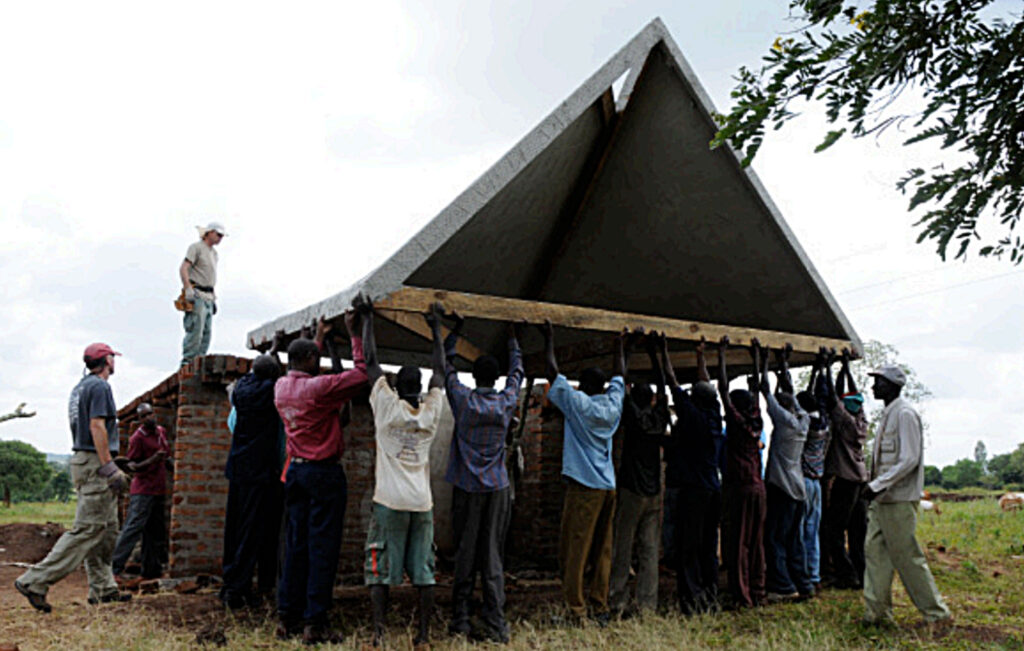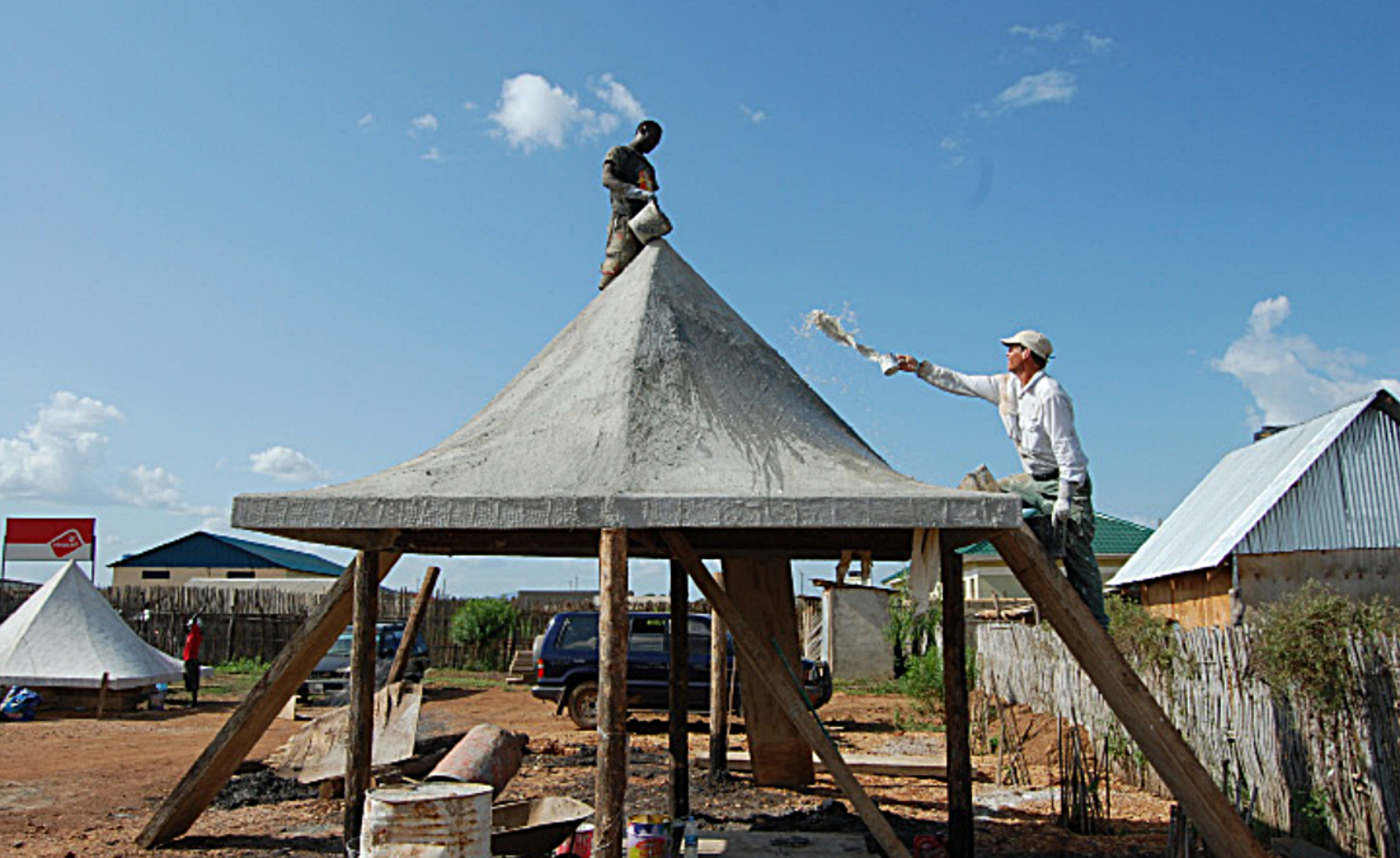| Material | Latex-infused mortar with fiberglass mesh or fabric and chicken wire |
| Location | Sudan; Kenya; USA; Afghanistan; Bangladesh; Tanzania; Rwanda; Uganda |
| Date | 1995-present |
| Concept Design | George Nez |
| Design Team | Tim Carr, Steve Riley, Brad Wells |
| Engineer | Al Knott, George Nez |
| Consultants | Steve Brooks (Oz Architecture), Craig Hoffman (Engineering Ministries International), Mark Reiner (iCATIS) |
| Installer | TSC Global |
| Cost | $800 to $1600 USD |
| Occupancy | 5+ people |
| Area of Roof | 16 sq m |

Finished bathroom facility in Kirenga, Tanzania. Photo: TSC Global
After spending years advising the United Nations and US Agency for International Development, George Nez, 90, decided that he had his fill of rusting, corrugated tin roofs. He wanted to find a solution for this common problem that would be durable, low-cost, and accessible to anyone around the world. Instead of approaching shelter design using traditional ground-up construction process, which requires building a solid foundation and walls, Nez inverted the normal sequence of events and started with the roof for a “roofs first” approach.
He came up with an open-source design for Thin Shell Composite Hyperbolic Paraboloid, otherwise known as the TSC HyPar roof. It’s a highly adaptable, modular, lightweight and easy to construct shelter system. “The HyPar roof solves the concerns for shelter because it gives you something that protects you from the sun and rain immediately, with the walls coming later,” Nez explains.
The roof is made of four hyperbolic paraboloidal surfaces and it is constructed in situ and then lifted in place. The saddle-shaped planes are made of a simple wood or bamboo frame, surfaced with a latex cement, and jointed to form a pyramid shape. The shell, covered in a thin membrane, is in compression—a key to the roof’s strength. The frame is first wrapped in a fine mesh screen and chicken wire. These are tightly stretched to create the four HyPar shapes, leaving a triangle vent at the peak. After one thin layer of latex mortar is glazed onto the roof and dried, the roof is easily lifted onto four posts. The posts can be made of a variety of materials from wood to cinderblock. Non-load-bearing walls can be constructed of any available material, such as compressed earth brick, stones, or rubble from disaster sites. From there, four to five thin layers of latex cement, amounting to 1 centimeter in thickness, can be added.
The average production time is 8 to 10 days, and most of the construction tasks are non-specialized, creating job opportunities for local people. Given enough space, an assembly line construction method can be used to allow for many roofs to be constructed at once. “In a very short amount of time, like a week, you are able to train local artisans in building the frame. By the end of the 21-roof school project in Nakuru, I was just watching the whole process, which was great,” says Tim Carr, former director of TSC Global, a Colorado-based company that has implemented the design in various projects throughout Africa, and now Haiti.

top image: Workers line a demo structure in Kadugli, Sudan with fiberglass mesh strips. Photo: TSC Global

bottom image: Stretching fabric tight to create the HyPar form in Juba, Sudan. Photo: TSC Global
The company is scientifically testing the earthquake threshold of the HyPar roofs. “Our roofs are not the only way to go, but give people options that they can construct themselves,” says Steve Riley, director of TSC Global. He is most excited about the possibility of using this construction to redesign slums, like in Kenya. TSC Global’s concept is to build large settlements using the HyPar roofs, accompanied by a subsidized mortgage system for slum communities that allows residents to upgrade their living situation without increasing their current rental costs. “We feel like our roofs can be used from emergency reconstruction, to low-cost slum redevelopment, to homes and schools. The roofs run the gamut of meeting the needs of people,” Riley says.

top image: Applying latex cement to create a final 1centimeter-thick shell in Juba, Sudan. Photo: TSC Global

bottom image: A group of people raise a HyPar roof over a school’s bathroom facility in Kirenga, Tanzania. Photo: TSC Global
















READ OR LEAVE A COMMENT